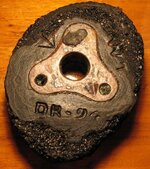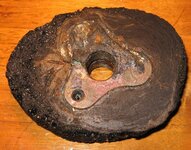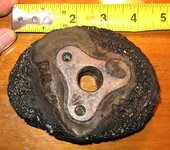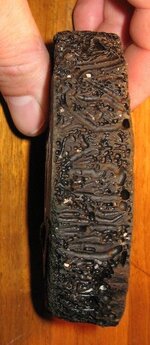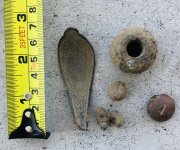firstbiggestmost
Full Member
- Oct 29, 2009
- 127
- 1
- Detector(s) used
- Excall II, Tesoro Sand Shark
- Primary Interest:
- All Treasure Hunting
Hi everyone,
I found this in the wet sand today at the beach. It's made of wood and brass/bronze. Looks like it might be part of a ships
rigging?? I'm also wondering how to preserve the wood. I have it wrapped in a damp towel for now.
Thanks in advance and happy hunting.
I found this in the wet sand today at the beach. It's made of wood and brass/bronze. Looks like it might be part of a ships
rigging?? I'm also wondering how to preserve the wood. I have it wrapped in a damp towel for now.
Thanks in advance and happy hunting.


